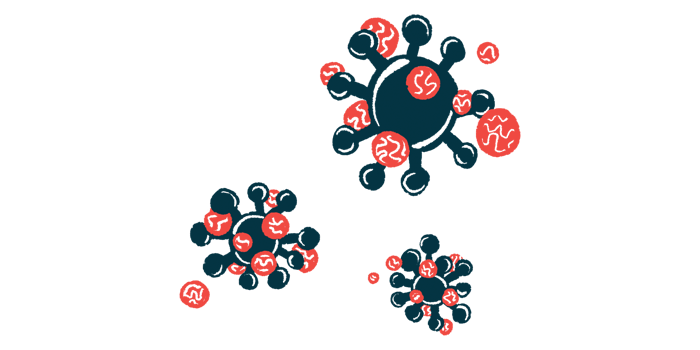Immune cell behavior could inform MS treatment strategies: Study
Tregs move in pools around body as ‘healer army’
Written by |

Researchers have identified characteristics of regulatory T-cells (Tregs) — a family of immune cells that help keep harmful immune reactions in check — that could make it easier to develop targeted treatments for autoimmune conditions like multiple sclerosis (MS).
They found that Tregs exist as a common pool that moves around the body to repair damage in any tissues in which they’re needed. An approach to guide these cells to particular organs could offer a targeted way of treating various diseases without needing widespread immunosuppression.
“We’ve uncovered new rules of the immune system,” Adrian Liston, PhD, a professor at Cambridge University and the study’s senior author, said in a university press release.
The study, “The tissue-resident regulatory T cell pool is shaped by transient multi-tissue migration and a conserved residency program,” was published in Immunity.
“This ‘unified healer army’ can do everything — repair injured muscle, make your fat cells respond better to insulin, regrow hair follicles,” Liston said. “To think that we could use it in such an enormous range of diseases is fantastic.”
The researchers are raising funds to establish a company that they’ll use to run clinical trials testing the approach within the next few years.
Study results challenge common assumptions
Tregs are a family of immune cells that work to regulate the rest of the immune system and prevent its overactivity. They’re important for immune tolerance, the process by which the immune system learns not to attack the body’s own cells.
This tolerance fails in autoimmune conditions such as MS, in which the immune system mistakenly causes the destruction of myelin, a protective substance surrounding nerve cells, in the brain and spinal cord. Therapeutic strategies to boost Treg activity are of interest for treating MS.
In specific tissues, Tregs seem to serve specialized functions. For example, Tregs in the brain can help promote the growth of oligodendrocytes, the cells that produce myelin, while Tregs in fat tissue are involved in fat metabolism. Scientists have assumed that there are many distinct populations of Tregs, each specialized and restricted to work in a different type of tissue.
But a series of experiments, the researchers showed that this might not be the case. Instead, evidence suggested the presence of a common pool of Tregs shared by different parts of the body.
The researchers isolated Tregs from 48 different tissues in mice and profiled them, finding that they had many common characteristics and genetic markers that were not specific to particular tissues.
Further experiments showed that Treg populations in particular tissues were short-lived, meaning they didn’t dwell in one place for too long.
Tregs taken from one type of tissue were also able to successfully establish themselves in different tissues without preference, reflecting that “the same population of Treg cells is capable of repopulating multiple tissues,” the researchers wrote.
Treatments could target single organ
Based on these collective findings, the researchers believe there is a non-specialized pool of Tregs that move around in circulation. If these cells recognize a specific threat in a tissue, they’ll stay there temporarily and do what’s needed, but then move on to other tissues.
“These data … support a circular migration model where activated Treg cells enter, differentiate [grow and expand], transiently reside, and leave,” the researchers wrote.
The findings may have implications for treating autoimmune diseases like MS. Current anti-inflammatory medications treat the whole body systemically, which can lead to widespread immunosuppression and other side effects.
“Now that we know these regulatory T cells are present everywhere in the body, in principle we can start to make immune suppression and tissue regeneration treatments that are targeted against a single organ — a vast improvement on current treatments that are like hitting the body with a sledgehammer,” Liston said.
The idea, for which the researchers have shown proof of concept in mice, is that Tregs could be attracted to specific parts of the body with a medication, where they’d grow and activate to fight autoimmunity in that region.
In MS, for example, boosting Treg activity in the brain and spinal cord could help dampen the autoimmune responses causing myelin damage.
“By boosting the number of regulatory T cells in targeted areas of the body, we can help the body do a better job of repairing itself, or managing immune responses,” Liston noted, adding that this would be a relevant approach for treating MS and many other autoimmune or infectious diseases.




